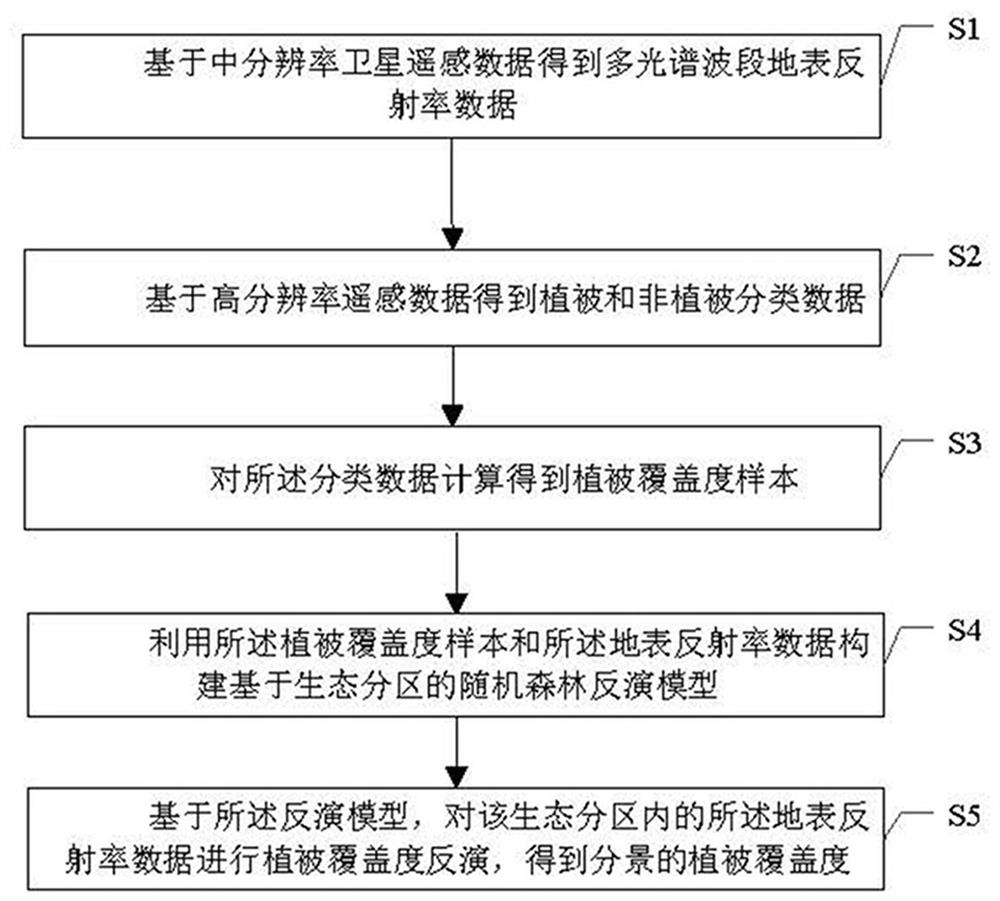Vegetation coverage inversion method based on combination of multi-source remote sensing data and geographic partition data
A technology of vegetation coverage and remote sensing data, applied in the direction of analyzing materials, material analysis by optical means, instruments, etc., can solve problems such as unscientific, and achieve the effect of improving inversion accuracy and product production efficiency
- Summary
- Abstract
- Description
- Claims
- Application Information
AI Technical Summary
Benefits of technology
Problems solved by technology
Method used
Image
Examples
Embodiment Construction
[0009] Embodiments of the present invention are described below with reference to the accompanying drawings, so that those skilled in the art can better understand the present invention and implement it, but the enumerated embodiments are not used as a limitation of the present invention. In the case of no conflict, The following embodiments and the technical features in the embodiments can be combined with each other, wherein the same components are denoted by the same reference numerals.
[0010] Such as figure 1 As shown, in step S1, medium-resolution satellite remote sensing data is obtained, atmospheric correction, cloud masking processing, etc. are performed on it, and multi-spectral band surface reflectance data are obtained. Further, the surface albedo data can be resampled.
[0011] In one example, Sentinel-2 data can be retrieved from the remote sensing data cloud platform to obtain the surface reflectance of multi-spectral bands (bands 2-8, 8A, 11-12). The 10-meter r
PUM
 Login to view more
Login to view more Abstract
Description
Claims
Application Information
 Login to view more
Login to view more - R&D Engineer
- R&D Manager
- IP Professional
- Industry Leading Data Capabilities
- Powerful AI technology
- Patent DNA Extraction
Browse by: Latest US Patents, China's latest patents, Technical Efficacy Thesaurus, Application Domain, Technology Topic.
© 2024 PatSnap. All rights reserved.Legal|Privacy policy|Modern Slavery Act Transparency Statement|Sitemap



